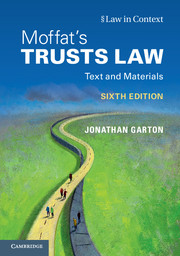Introduction
(a) The centrality of intention
When deciding how to give away property the owner of assets has a choice between outright gift or a gift in trust. Stripped to its essence, the private trust, to reiterate a point made earlier, is a gift projected on the plane of time. However, the limited functional similarity of these two forms of gift, the absolute gift and the gift in trust, must not disguise the fact that they are conceptually distinct.
M Pickard, ‘The Goodness of Giving, The Justice of Gifts and Trusts’ (1983) 33 U Toronto LJ 381
Thus there are gifts, which are Legal, and, then again, there are trusts, which are Equitable. These are two distinct arrangements, not simply two types of benefaction, although it is not clear whether we treat them as distinct because we sharply distinguish wanting to make a gift to another, on the one hand, from wanting to make a trust for another, on the other hand, or because we pay attention to the historical distinction that gifts were creatures of Law, and trusts, creatures of Equity. But distinct they are, and so we think that there are separate requirements peculiar to each …
In practice also there will usually be no difficulty in distinguishing the two forms since trusts are commonly created in writing, usually by deed, wherein the donor designates another person or group of persons as trustee(s). But neither writing nor the appointment of others as trustees is essential. There is a third method of making a gift: people can unilaterally and orally declare themselves to be trustees of property for the benefit of others. The absence of written evidence in such circumstances can lead to difficulty of interpretation in this area, particularly that of separating general intention from particular intention. By general intention is meant the intention on the part of the owner of the assets to be a benefactor of some other person(s). Although both specific modes of giving, the outright gift and the declaration of oneself as trustee, do have as a common core that generalised intention to be a benefactor, the legal system discriminates between them. It purports to ignore the common generalised intention and concentrates instead on the particular intention, whether, for instance, to be a donor of an absolute gift or to be a trustee.
